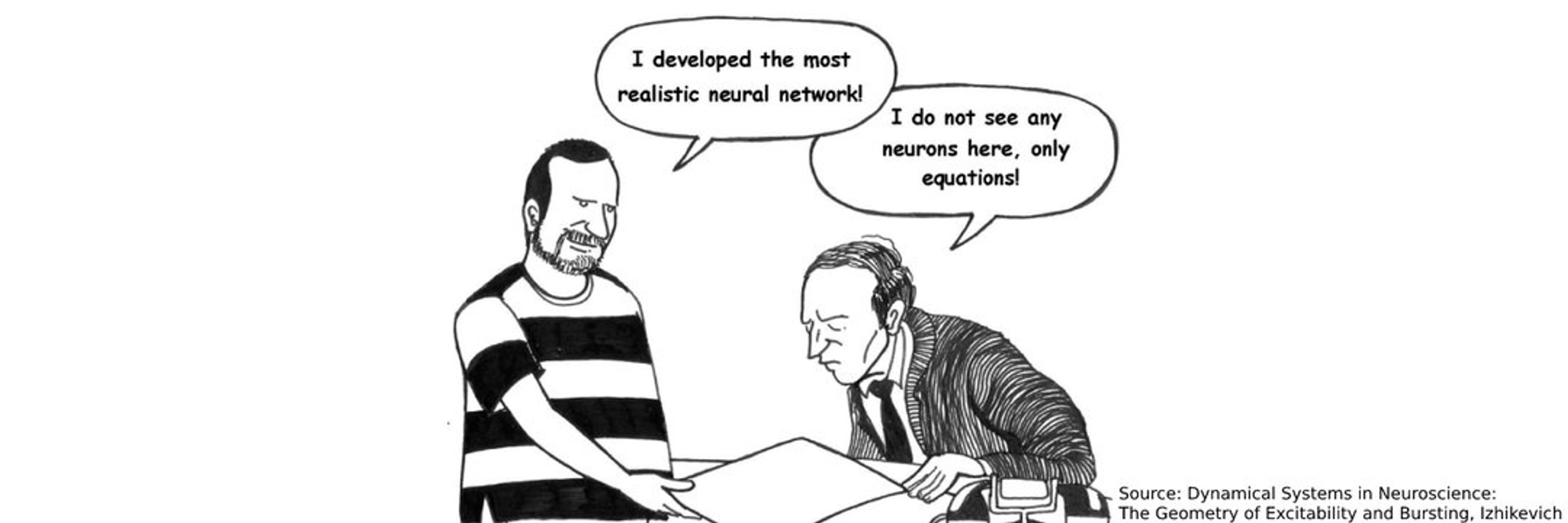
A Erdem Sagtekin
@aesagtekin.bsky.social
chronic reader of old papers. dynamical systems & computation & bio-plausible learning. curr: @flatiron ccn, msc: comp neuro @tubingen, bsc: EE.
Reposted by A Erdem Sagtekin
1/6 Why does the brain maintain such precise excitatory-inhibitory balance?
Our new preprint explores a provocative idea: Small, targeted deviations from this balance may serve a purpose: to encode local error signals for learning.
www.biorxiv.org/content/10.1...
led by @jrbch.bsky.social
Our new preprint explores a provocative idea: Small, targeted deviations from this balance may serve a purpose: to encode local error signals for learning.
www.biorxiv.org/content/10.1...
led by @jrbch.bsky.social

May 27, 2025 at 7:49 AM
1/6 Why does the brain maintain such precise excitatory-inhibitory balance?
Our new preprint explores a provocative idea: Small, targeted deviations from this balance may serve a purpose: to encode local error signals for learning.
www.biorxiv.org/content/10.1...
led by @jrbch.bsky.social
Our new preprint explores a provocative idea: Small, targeted deviations from this balance may serve a purpose: to encode local error signals for learning.
www.biorxiv.org/content/10.1...
led by @jrbch.bsky.social
Reposted by A Erdem Sagtekin
How to find all fixed points in piece-wise linear recurrent neural networks (RNNs)?
A short thread 🧵
In RNNs with N units with ReLU(x-b) activations the phase space is partioned in 2^N regions by hyperplanes at x=b 1/7
A short thread 🧵
In RNNs with N units with ReLU(x-b) activations the phase space is partioned in 2^N regions by hyperplanes at x=b 1/7

December 11, 2024 at 1:32 AM
How to find all fixed points in piece-wise linear recurrent neural networks (RNNs)?
A short thread 🧵
In RNNs with N units with ReLU(x-b) activations the phase space is partioned in 2^N regions by hyperplanes at x=b 1/7
A short thread 🧵
In RNNs with N units with ReLU(x-b) activations the phase space is partioned in 2^N regions by hyperplanes at x=b 1/7
Reposted by A Erdem Sagtekin
(1/5) Fun fact: Several classic results in the stat. mech. of learning can be derived in a couple lines of simple algebra!
In this paper with Haim Sompolinsky, we simplify and unify derivations for high-dimensional convex learning problems using a bipartite cavity method.
arxiv.org/abs/2412.01110
In this paper with Haim Sompolinsky, we simplify and unify derivations for high-dimensional convex learning problems using a bipartite cavity method.
arxiv.org/abs/2412.01110

Simplified derivations for high-dimensional convex learning problems
Statistical physics provides tools for analyzing high-dimensional problems in machine learning and theoretical neuroscience. These calculations, particularly those using the replica method, often invo...
arxiv.org
December 3, 2024 at 7:34 PM
(1/5) Fun fact: Several classic results in the stat. mech. of learning can be derived in a couple lines of simple algebra!
In this paper with Haim Sompolinsky, we simplify and unify derivations for high-dimensional convex learning problems using a bipartite cavity method.
arxiv.org/abs/2412.01110
In this paper with Haim Sompolinsky, we simplify and unify derivations for high-dimensional convex learning problems using a bipartite cavity method.
arxiv.org/abs/2412.01110
This list likely reflects mainly my interests and circle, and I’m sure I’ve missed many people, but I gave it a try: (I’ll be slowly editing it until it reaches 150/150)
go.bsky.app/7VFUkdn
(also, I tried but couldn't remove my profile...)
go.bsky.app/7VFUkdn
(also, I tried but couldn't remove my profile...)
November 9, 2024 at 12:35 PM
This list likely reflects mainly my interests and circle, and I’m sure I’ve missed many people, but I gave it a try: (I’ll be slowly editing it until it reaches 150/150)
go.bsky.app/7VFUkdn
(also, I tried but couldn't remove my profile...)
go.bsky.app/7VFUkdn
(also, I tried but couldn't remove my profile...)
i enjoyed reading the geometry of plasticity paper and felt that something important was coming, this is it:
Check out our new preprint! We show there is a better learning algorithm for #compneuro than gradient descent (GD): exponentiated gradients (EG).
tl;dr: EG respects Dale's law, produces weight distributions that match biology, and outperforms GD in biologically relevant scenarios.
🧠📈 🧪
tl;dr: EG respects Dale's law, produces weight distributions that match biology, and outperforms GD in biologically relevant scenarios.
🧠📈 🧪
Why does #compneuro need new learning methods? ANN models are usually trained with Gradient Descent (GD), which violates biological realities like Dale’s law and log-normal weights. Here we describe a superior learning algorithm for comp neuro: Exponentiated Gradients (EG)! 1/12 #neuroscience 🧪
November 1, 2024 at 8:35 AM
i enjoyed reading the geometry of plasticity paper and felt that something important was coming, this is it:

